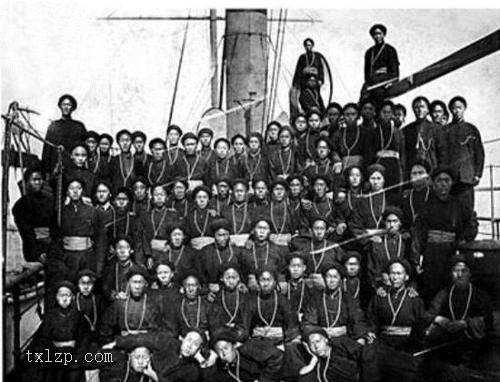Macao was called Haojing Macao in ancient times. When the First Emperor of Qin won the government to unify China, Macao was officially incorporated into the territory of China and was subordinate to Panyu County, Nanhai County. Macao used to be a small fishing village, because at that time, Pokou could be called“ Australia”, So it is called“ Macau”. Oysters (oysters) are abundant in Macao and its vicinity, so later generations changed the name to more elegant“ Mirror&rdquo
During the Jiajing period of the Ming Dynasty, Portuguese businessmen obtained the right of residence in Macao from the local government of Guangdong. In 1887, Portugal took advantage of the decay of the Qing government to officially turn Macao into a colony. It was not until 1999 that Macao returned to the motherland
During the Second World War, because Portugal was a neutral country, Macao was not occupied by Japan, which made Macao develop and prosper during the war. As the pillar of Macao’s economy, the% gambling industry is booming, which has driven the development of tourism, catering, entertainment, real estate and investment industries, thus becoming a world-famous“ Sales Grottoes&rdquo
This group of photos was taken by photographer Jack and published in Life magazine. It shows the social sentient beings and architectural features of Macao, China in 1949
Picture reading:
澳门古代称为:濠镜澳,秦始皇赢政统一中国之时,澳门就正式纳入了中国的版图隶属于南海郡番禺县地。澳门从前就是一个小渔村,因为当时泊口可称为“澳”,所以称“澳门”。澳门及其附近盛产蚝(牡蛎),因此后人把这个名称改为较文雅的“濠镜”。
明朝嘉靖年间,葡萄牙商人从广东地方政府手里取得了在澳门的居住权。1887年,葡萄牙趁着清政府衰朽之际,正式将澳门变成了殖民地。直到1999年,澳门才回归祖国怀抱。
二次世界大战期间,因为葡萄牙属于中立国,所以澳门没有被日本占领,从而使澳门在战争期间获得了发展与繁荣。作为澳门经济支柱的赌%博%业的兴旺,同时带动了旅游、餐饮、娱乐、房地产和投资业的发展,从而成为全球知名的“销金窟”。
本组照片由摄影师Jack拍摄,图片刊登在《生活》杂志上。展示了1949年中国澳门的社会众生百态,和建筑风貌。
图片阅览:
![图片[1]-Old photos of life scenes in Macao in July 1949-China Archive](https://chinaarchive.net/photo/republic-of-china/1-200209114020.jpg)
澳门某赌%场所的玩家在博弈。妈妈带着小孩上赌桌。
![图片[2]-Old photos of life scenes in Macao in July 1949-China Archive](https://chinaarchive.net/photo/republic-of-china/1-200209114020-50.jpg)
议事亭前地上的葡萄牙英雄美士基打(Lt. Nicolau de Mesquita)的雕像。
![图片[3]-Old photos of life scenes in Macao in July 1949-China Archive](https://chinaarchive.net/photo/republic-of-china/1-200209114020-51.jpg)
![图片[4]-Old photos of life scenes in Macao in July 1949-China Archive](https://chinaarchive.net/photo/republic-of-china/1-200209114020-52.jpg)
民众在一家酒店前跳舞。远处是运输船。
自1847年以来,澳门赌业在葡萄牙的管治之下渐趋合法化,澳门也把赌业作为其经济收入的重要组成部分。
![图片[5]-Old photos of life scenes in Macao in July 1949-China Archive](https://chinaarchive.net/photo/republic-of-china/1-200209114021.jpg)
![图片[6]-Old photos of life scenes in Macao in July 1949-China Archive](https://chinaarchive.net/photo/republic-of-china/1-200209114021-50.jpg)
1949年的澳门赌%场,欧洲的贵妇也慕名前来一试身手。
![图片[7]-Old photos of life scenes in Macao in July 1949-China Archive](https://chinaarchive.net/photo/republic-of-china/1-200209114021-51.jpg)
1949年时澳门的银行“大丰银号”,工作人员正在武装押运人员的看守下运送现金。
![图片[8]-Old photos of life scenes in Macao in July 1949-China Archive](https://chinaarchive.net/photo/republic-of-china/1-200209114021-52.jpg)
![图片[9]-Old photos of life scenes in Macao in July 1949-China Archive](https://chinaarchive.net/photo/republic-of-china/1-200209114022.jpg)
![图片[10]-Old photos of life scenes in Macao in July 1949-China Archive](https://chinaarchive.net/photo/republic-of-china/1-200209114022-50.jpg)
![图片[11]-Old photos of life scenes in Macao in July 1949-China Archive](https://chinaarchive.net/photo/republic-of-china/1-200209114022-51.jpg)
![图片[12]-Old photos of life scenes in Macao in July 1949-China Archive](https://chinaarchive.net/photo/republic-of-china/1-200209114022-52.jpg)
澳门大街街景,满眼欧式建筑。
![图片[13]-Old photos of life scenes in Macao in July 1949-China Archive](https://chinaarchive.net/photo/republic-of-china/1-200209114022-53.jpg)
这名警员的帽子真奇怪。
![图片[14]-Old photos of life scenes in Macao in July 1949-China Archive](https://chinaarchive.net/photo/republic-of-china/1-200209114023.jpg)
![图片[15]-Old photos of life scenes in Macao in July 1949-China Archive](https://chinaarchive.net/photo/republic-of-china/1-200209114023-50.jpg)
![图片[16]-Old photos of life scenes in Macao in July 1949-China Archive](https://chinaarchive.net/photo/republic-of-china/1-200209114023-51.jpg)
![图片[17]-Old photos of life scenes in Macao in July 1949-China Archive](https://chinaarchive.net/photo/republic-of-china/1-200209114023-52.jpg)
在澳门,还有提供特色场所的服务区。
![图片[18]-Old photos of life scenes in Macao in July 1949-China Archive](https://chinaarchive.net/photo/republic-of-china/1-200209114023-53.jpg)
顾客在贝拉维斯塔酒店(BelaVistaHotel)的露台上跳舞。



![[Qing Dynasty] British female painter—Elizabeth Keith, using woodblock prints to record China from the late Qing Dynasty to the early Republic of China—1915-China Archive](https://chinaarchive.net/wp-content/uploads/2022/11/image-191x300.png)

